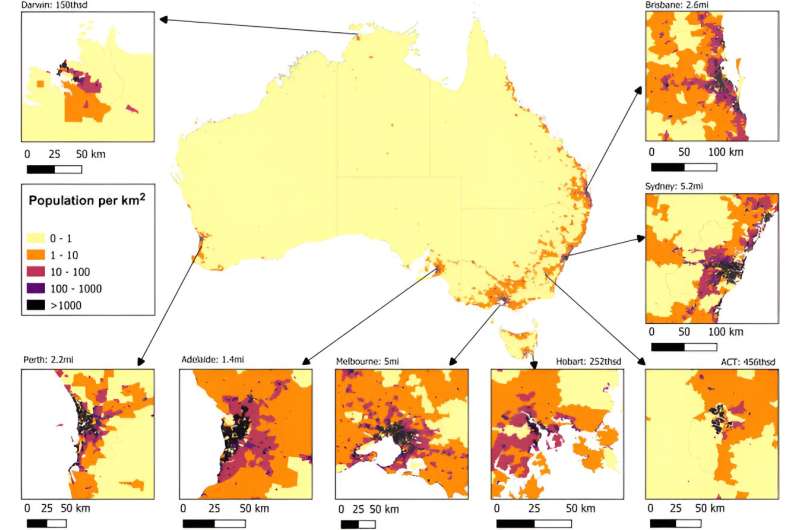This article has been reviewed according to Science X's editorial process and policies. Editors have highlighted the following attributes while ensuring the content's credibility:
fact-checked
peer-reviewed publication
trusted source
proofread
Death toll shows extreme air pollution events are a growing urban threat

New Curtin University-led research has estimated that 1,454 avoidable deaths (one person every five days) occurred in Australian capital cities in the past 20 years because of fine particle air pollution from extreme events such as bushfires and dust storms, wood-heater smoke or industrial accidents.
The study also found that nearly one-third of deaths from extreme air pollution exposure days could be prevented if pollution events were reduced by as little as 5%. The study, "Mortality burden attributable to exceptional PM 2.5 air pollution events in Australian cities: A health impact assessment," was published in the journal Heliyon.
Lead researcher Dr. Lucas Hertzog from Curtin's World Health Organization Collaborating Center for Climate Change and Health Impact Assessment said the findings highlighted the urgent need for effective strategies to manage air quality, particularly during extreme weather events like bushfires and dust storms, which are becoming more common due to climate change.
"Using data from 2001 to 2020 from air pollution monitoring sites, combined with a range of satellite and land use-related data, we modeled the exposure to exceptional levels of particulate matter air pollution (PM2.5) for each extreme pollution exposure day," Dr. Hertzog said.
"Despite relatively low daily PM2.5 levels generally (compared to global averages), Australian cities experience days with extreme pollution levels where PM2.5 concentrations exceed the WHO Air Quality Guideline standard.
"Sydney and Melbourne reported the highest number of deaths attributable to extreme air pollution events, with 541 and 438 deaths respectively, followed by Brisbane and Perth with 171 and 132 deaths."
"Adelaide and Hobart were the cities that showed, across the 20-year period, fewer days exceeding WHO air quality exposure recommendations, with Adelaide recording only five days and Hobart 11 days above the threshold.
"Darwin, despite its relatively low number of deaths due to PM2.5 exposure events, experienced a high number of days exceeding WHO recommendations, 10 times more than cities like Melbourne."
Dr. Hertzog said the findings show how extreme air pollution events could seriously affect health in urban areas, and understanding this link was crucial, as climate change may increase the frequency and intensity of such pollution events.
"Diseases associated with particulate matter air pollution include asthma and COPD (chronic obstructive pulmonary disease) as well as cardiovascular disorders," Dr. Hertzog said.
"Our study's insights can aid in protecting public health by helping to inform policy development and actions to reduce impacts from extreme air pollution events.
"While responding to bushfires and dust storms is an increasingly challenging task, authorities have a crucial role in land use management. They also regulate energy policy and control wood heater regulations. Additional strategies to reduce emissions from industrial accidents or road transport-related smog events could enhance the control of sources of air pollution and improve well-being.
"It is also possible to reduce the burden of mortality by improving public health warnings and increasing community awareness of smoke avoidance behaviors."
More information: Lucas Hertzog et al, Mortality burden attributable to exceptional PM2.5 air pollution events in Australian cities: A health impact assessment, Heliyon (2024). DOI: 10.1016/j.heliyon.2024.e24532
Journal information: Heliyon
Provided by Curtin University





















